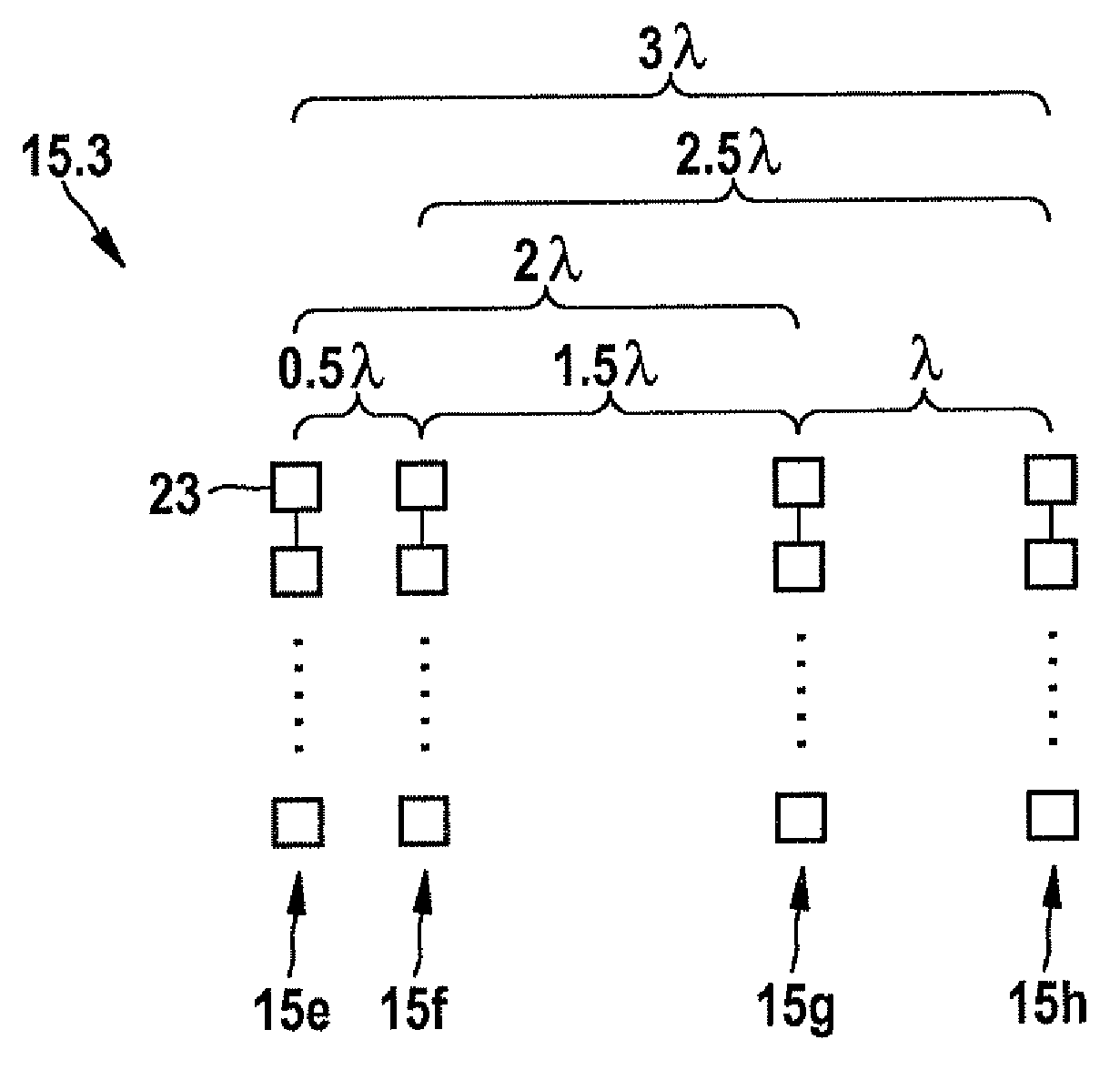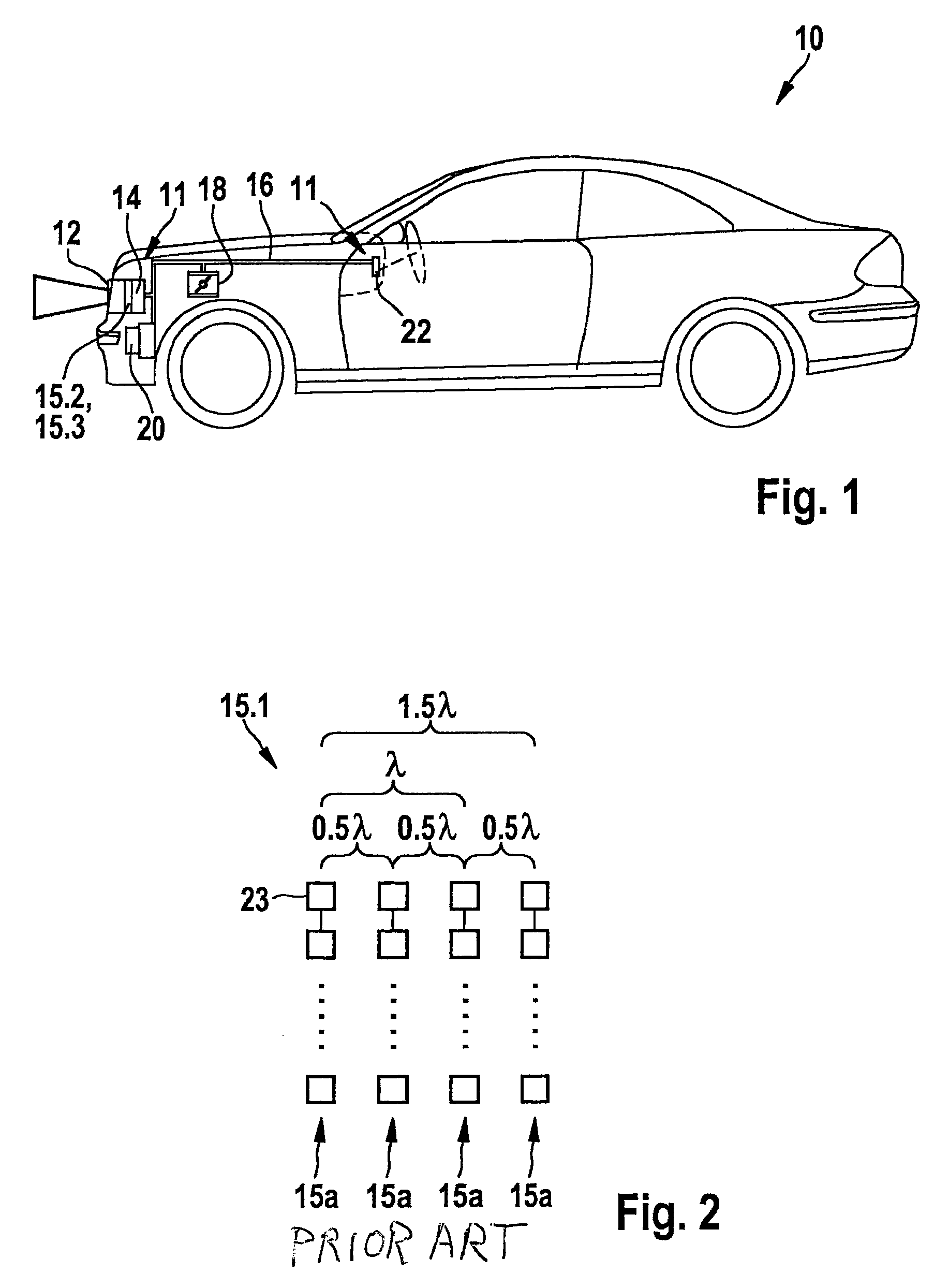Radar sensor device having at least one planar antenna device
a technology of radar sensor and planar antenna, which is applied in the direction of individually energised antenna arrays, instruments, and reradiation, etc., can solve the problems of increasing the total cost of sensors, redundant patch antennas, and the number of mixers used as a considerable cost factor, so as to achieve minimal redundancy and good compromise
- Summary
- Abstract
- Description
- Claims
- Application Information
AI Technical Summary
Benefits of technology
Problems solved by technology
Method used
Image
Examples
Embodiment Construction
s
[0015]A motor vehicle 10 illustrated in FIG. 1 having an adaptive cruise control device 11 as a driver assistance system features a radar sensor device 12 as an object detection sensor which is mounted on the front end of motor vehicle 10 and in whose housing a control device 14 of adaptive cruise control device 11 is also accommodated. Radar sensor device 12 is used for detecting objects in the surrounding field of motor vehicle 10. Radar sensor device 12 is connected to control device 14. Control device 14 is connected via a data bus 16 (CAN, MOST or the like) to an electronic drive control unit 18, a brake system control unit 20, as well as to an HMI control unit 22 of a human-machine interface. In further exemplary embodiments (not shown), control unit 14 and HMI control unit 22 may also be integrated in a control device of adaptive cruise control device 12, in particular in a shared housing.
[0016]With the aid of a multi-beam radar, radar sensor device 12 measures the distances...
PUM
 Login to View More
Login to View More Abstract
Description
Claims
Application Information
 Login to View More
Login to View More - R&D
- Intellectual Property
- Life Sciences
- Materials
- Tech Scout
- Unparalleled Data Quality
- Higher Quality Content
- 60% Fewer Hallucinations
Browse by: Latest US Patents, China's latest patents, Technical Efficacy Thesaurus, Application Domain, Technology Topic, Popular Technical Reports.
© 2025 PatSnap. All rights reserved.Legal|Privacy policy|Modern Slavery Act Transparency Statement|Sitemap|About US| Contact US: help@patsnap.com



